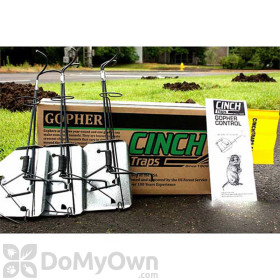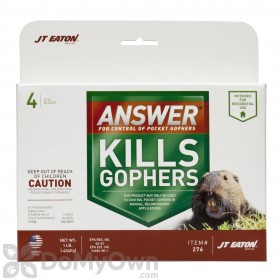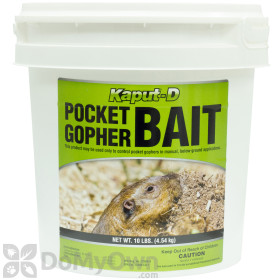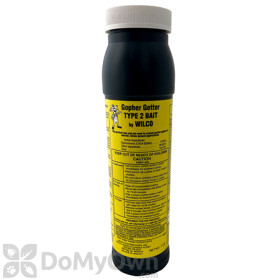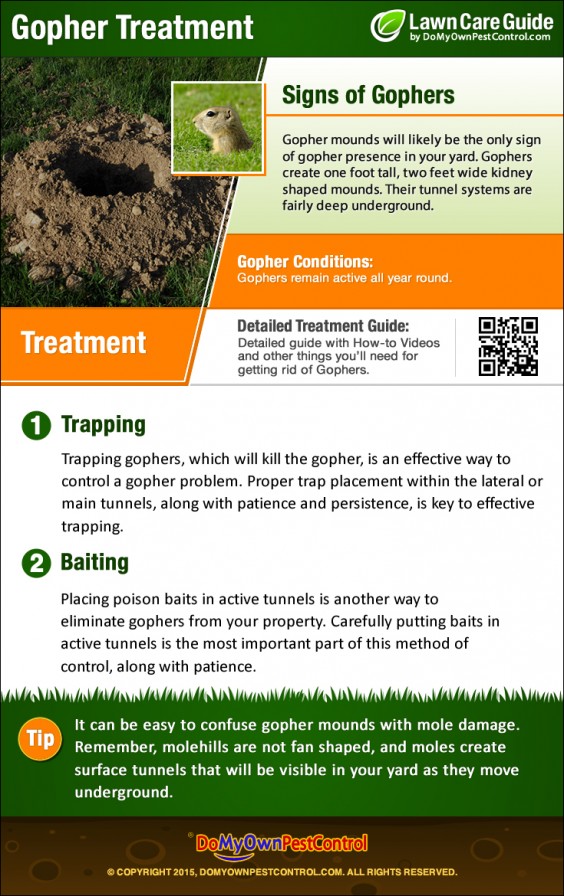The Two Methods That Work
By following the directions of the gopher killer products, and having patience, you can successfully gain control of the gophers in your lawn.
Trapping
For main tunnel placement:
- Locate the main tunnel by locating the soil plug in a fresh mound. The main tunnel should be about a foot away from the plug. Use a probe to find the tunnel; the soil will give easily once the tunnel has been located.
- Dig a small hole, large enough to place the trap. Clean out the excess soil.
- Place two traps, facing the opposite way, in the tunnel. Attach traps to stakes with thin wire, so you can locate and check them easily later.
- Replace dirt to block out light and air.
- Check at least once a day, in the morning or evening.
- Find the soil plug in a fresh mound. Find the freshest soil to locate the entrance and dig a small hole, cleaning out dirt to fit the trap into the tunnel.
- Place about a foot into the mound, attaching to a stake with thin wire.
- Don't plug the hole; the air and light will alert the gopher to a breach in the system, and they will try to re-plug the entrance, encountering the trap.
Always read and follow all directions carefully for safe and successful gopher trapping.
Baiting
- Find main tunnels by using a probe, checking about a foot away from a fresh mound soil plug.
- Once you locate a tunnel, dig a small hole.
- Apply bait with a long spoon, using rates listed on the product label.
- Recover your hole carefully, making sure not to cover up any of the bait with dirt.
Your baits should take affect within a few weeks, but you may have to keep applying the bait (as often as label allows) to ensure gophers have eaten the bait; this could take a few weeks, depending on how quickly gophers find and consume the bait. Make sure to continue to check for new, fresh mounds, as this will be an indication of the success of your baiting, and you may have to try again.
Gassing
- Locate an active tunnel or mound.
- Gather extra soil, rocks or other suitable material to close the tunnel or mound after inserting the gasser cartridge and to seal other entrances to stop gas from escaping.
- Use the gathered material to seal any other mounds or openings near the target mound or tunnel.
- Use a trowel to dig a small hole into the mound or tunnel to insert the gasser cartridge.
- Insert the fuse into gasser cartridge following the product label instructions
- Quickly light fuse and insert the gasser cartridge into the opening you created, fuse end first.
- Immediately cover the opening with the material you gathered for this purpose. Cover the hole so that gas is not escaping but do not tamp down the oil so much that the cartridge is smothered.
- Look around for smoke escaping from any area and use the gathered materials to cover if needed.
- Be sure all children and non-target animals are out of the area prior to using a gasser.
- Do not use gassers indoors or under any type of building, porch, fence or any other structure
- Avoid breathing in gasser cartridge smoke
- Do not use gasser cartridges in areas where grass or other vegetation is very dry as it can catch fire with this method





